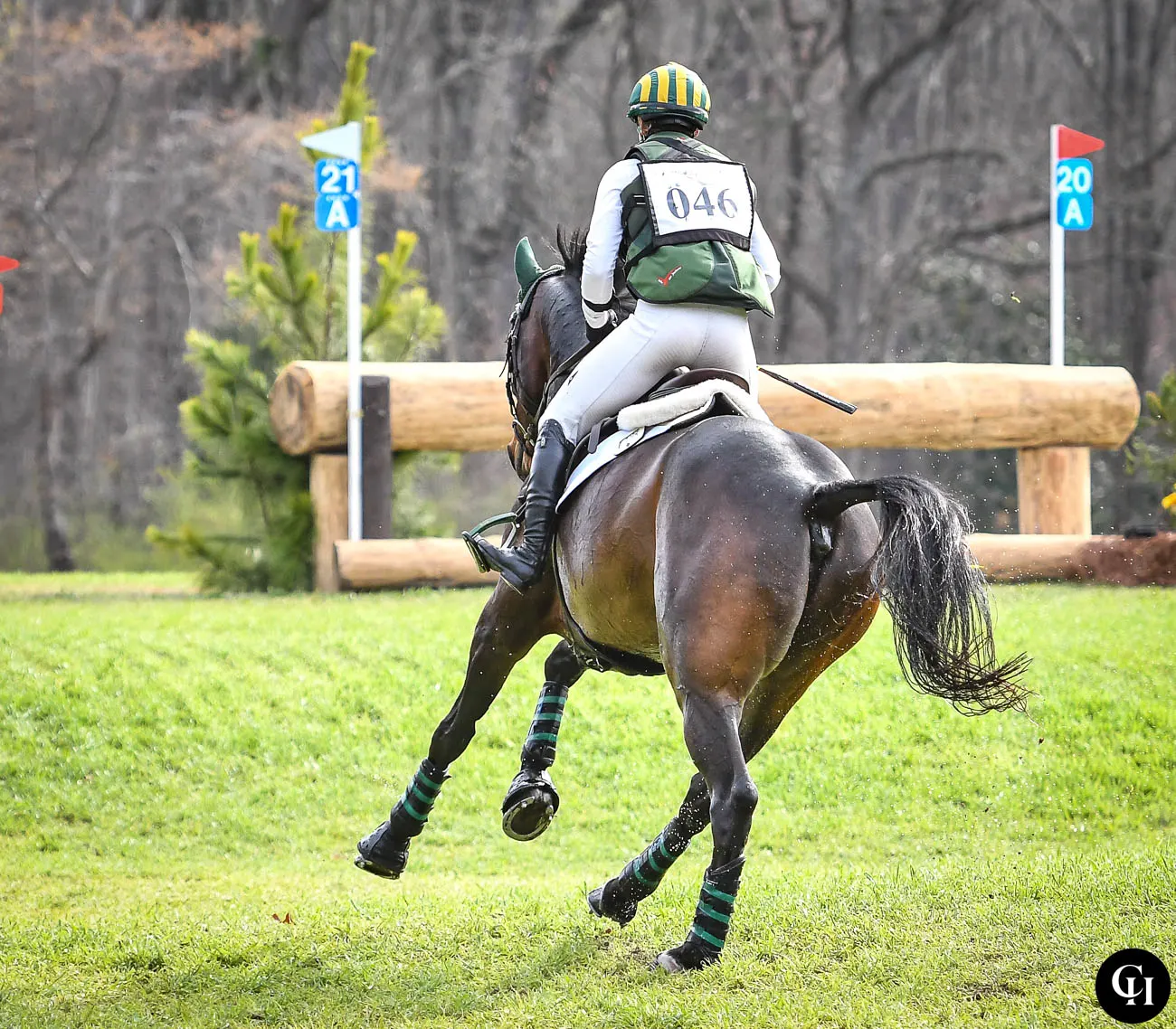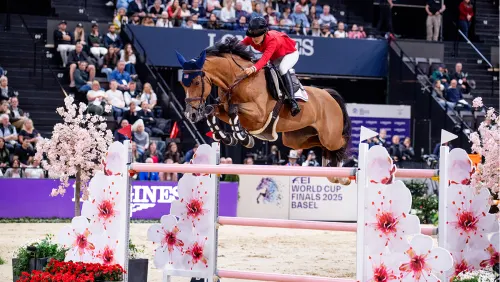Social license to operate and improving horse welfare have been hot topics this year through the equestrian world, and rule change proposals recently released by the Fédération Equestre Internationale focus heavily on those.
National federations and stakeholders now have until Aug. 21 to comment on the draft proposals. The rule change proposals then will be voted on during the FEI General Assembly, which was scheduled to take place Nov. 9-13 in Muscat, Oman. However, the Omani government requested it be canceled “given the complex geopolitical situation in the Middle East and, in particular, the situation in Gaza.” The FEI is exploring other options for the General Assembly.
Expanding Definitions And Power
The FEI has put forth a proposal that would increase its power to sanction riders. It expands the list of offenses that can result in sanctions to include witness intimidation or retaliation, breach of the FEI Social Media Policy, and clarifies actions that are considered fraud or failure to cooperate. Notably, the possible sanctions for infractions have been increased, with the duration of suspensions for horse abuse doubling or tripling their current length in many cases (up to life remains the maximum penalty).


Proposed amendments to the definition of incorrect behavior would include: abusive or incorrect language, intimidation or harassment, offensive or abusive gestures, behaving in a threatening manner, hostility, prejudice or unlawful discrimination on grounds of race, color, sex, sexual orientation, language, religion, national or social origin disability, or other protected status.
The European Equestrian Federation and German Equestrian Federation have proposed a change to the definition of horse abuse that would expand it to include “use of any device or equipment which causes excessive pain to the horse or influence the natural movement of the horse with artificial methods, like attaching elastic band to the horse’s legs.”
The FEI is not supporting the proposal, commenting that it is mainly linked to recent events. (At the beginning of this year, videos surfaced of an individual, allegedly Cesar Parra, who is currently provisionally suspended by the FEI due to allegations of abuse, with a horse trotting with elastic cord attached to its front legs.)
“Any changes to the definition should be part of broader discussions further to the Equine Ethics and Wellbeing Commission’s report and related actions plan,” the FEI stated. “Therefore, it is proposed not to make the above-mentioned change but the FEI will be reviewing any matter linked to horse abuse, the FEI Code of Conduct for the Welfare of the Horse, and other welfare related items as part of the EEWC action plan.”
The FEI went on to propose changes to rules governing how horse abuse is reported. The changes say anyone who witnesses abuse must report it without delay. If the abuse occurs during or in relation to an FEI event, it should be reported as a protest to an official. Abuse witnessed at other times should be reported to the dedicated email welfare@fei.org and/or any other emails communicated by the FEI and/or through the FEI reporting mechanisms/tools.
In a separate proposal, the Swedish Equestrian Federation has proposed changes to the “blood rule,” which is found in the general regulations, jumping, eventing and dressage rule books, to correct inconsistencies and use the same regulations for all.
“There are obvious differences in the rules regarding abuse of horse, blood on the horse and penalties between the Olympic disciplines dressage, jumping and eventing, as well as in the general regulations,” stated the Swedish proposal, using as an example of a specific protocol for blood on a horse’s flank that is used in jumping but not other disciplines.
The FEI’s response stated it was “premature to make changes at this stage,” and all matters relating to horse abuse will be reviewed as part of the EEWC action plan.

Limiting Whip Use In Jumping
The Swedish federation also proposed limiting the use of the whip in show jumping to two times, stating the current rules are not in line with social license to operate.
“As a guidance only, the Athlete may signal the horse at the most two times in the arena (before and during the ride) by gently tapping with the whip on the shoulder or behind the saddle,” the Swedish federation proposed, noting this rule is currently used in national competitions in Sweden. All other uses would be considered excessive: The whip could not be used after elimination or following the completion of the ride, and any athlete who uses the whip excessively would be eliminated and possibly fined.
The FEI agreed the proposal should be discussed, but wants to do it as part of a full revision of jumping rules scheduled for 2025.
Per FEI policy, each discipline’s specific rules undergo a full revision every four years. Both jumping and dressage are scheduled for that process next year, with changes to be implemented in 2026. Currently the eventing rules are scheduled for a full revision in 2026 with implementation in 2027, but the FEI is considering moving the timeline up to align with dressage and show jumping and allow for changes to be enforced at the 2026 world championships, ahead of the 2028 Los Angeles Olympic Games.
Addressing Concerns About Permitted Tack
The German federation proposed changes to the FEI TackApp for jumping intended to address concerns riders and officials have had with understanding what equipment is currently allowed.
ADVERTISEMENT
“Considering the equine industry’s challenges around their social licence [sic] to operate, we would like to submit a proposal on how the transparency and enforceability could be improved,” the proposal stated. “A working group with experts of our [national federation] has developed a list with general remarks and photos of bits and bridles that in our view should be permitted in jumping. In our experience, publishing only what is allowed leaves less room for discussion and more authority for Stewards; we therefore recommend the same approach for the FEI TackApp.”

The TackApp has come under scrutiny since it was instituted in May 2023, with riders and trainers complaining that permitted equipment changes too frequently (the databased typically is updated monthly) and sometimes required riders to change gear in the schooling ring when a bit they used last week was no longer allowed. The updates were frozen in April and will remain frozen through the Paris Olympics and Paralympics, so that riders know the equipment allowed will not change before the Games.
The German federation’s suggestions for bits and bridles to be allowed in jumping include:
• Equipment with smooth or rounded outlines in the areas that exert pressure;
• Padded chains only; and string, rope, chain or similar are not allowed on the bridge of the nose;
• Only one noseband or hackamore over the bridge of the nose;
• Nosebands that are not excessively tightened and do not restrict the horses breathing or prevent movement of the jaw, and must sit on the bony part of the nose
The proposal then shares photos of permitted bits and bridles, stipulating that bits that are “very similar/comparable with those pictured (including similar types of differing manufacturers)” are allowed. In addition the German federation proposes: Curb gags are only permitted when used with two sets of reins; hackamores that are used in combination with a bit can only be paired with a snaffle.
The FEI agreed to discuss these changes for the full revision of the jumping rules in 2025.
See all of the jumping rule change proposals.
More Championship Opportunities
• The U.S. Equestrian Federation has proposed permitting ponies to be ridden in the FEI Children’s Championship in North America, since there is no pony championship here.
“Many North American athletes would be interested in the Continental Championship but would be ineligible under the current rules since most of those athletes ride ponies,” USEF stated in its proposal.
The FEI agrees with the intent, but in the interest of expanding opportunities worldwide, suggested changing the wording to “Ponies are not allowed in FEI Children Championships in Western Europe,” to permit other ponies to be ridden in other regions.
• The European Equestrian Federation has proposed the creation of a U25 championship for show jumping and eventing athletes. For the eventing championship, the EEF proposed a format similar to that held at the Pan American Games, where the cross-country is held at a level below dressage and show jumping. The FEI has deferred that discussion until 2025.
Dressage Proposals
• The Swedish and Dutch federations revived a proposal to stop requiring a double bridle at CDI3*/CDIO3* competitions and above. The proposal did not garner support from the FEI.
“As it was communicated last year, the FEI [Dressage Technical Committee] has the unanimous understanding that the use of snaffle or double bridle is a technical (sport) matter and not a matter of wellbeing/welfare,” the FEI stated in its response. “We understand the concerns regarding the social (media) perception, but on this topic, it is our understanding that the perception and reality are not aligned. Despite the amount of relevant work carried out until now, conclusive and/or unquestionable evidence has not been brought to the DTC that allow us to reach to a different conclusion.”

• The European Equestrian Federation proposed replacing the current “General Impression” collective mark at the end of dressage tests, which encompasses harmonious presentation of the rider/horse combination; rider’s position and seat, discreet and effective influence of the aids, with two new collective marks that each have a coefficient of 2:
ADVERTISEMENT
1. Scale of training (rhythm, suppleness, contact, impulsion, straightness and collection)
2. Harmony of rider and horse (position, effectiveness and sensitivity of rider’s aids)
This will be deferred to 2025 and the FEI Dressage Technical Committee proposed meeting with stakeholders to review the phrasing of the current collective mark.
Other proposals this year include:
• Limiting riders to only one earpiece if using earphones or electronic communications in warm-up or training.
• Requiring a horse that was eliminated for lameness to pass a re-inspection by the FEI veterinarian to compete in a test the following day, provided they did not need to qualify for the subsequent test.
• Decreasing the number of judges needed at the FEI World Cup Dressage Final from seven to five.
Eventing Proposals
• British Equestrian proposed adding a maternity leave policy for eventing, allowing “a suspension of categorisation to all athletes at all levels on the provision of a medical certificate that can be used at any stage of pregnancy. The suspension would cease in line with EU recommendations of 14 weeks post childbirth.”
Currently, dressage and show jumping have policies that permit riders to retain 50 percent of their world ranking points should they use the FEI maternity leave, however the British Equestrian proposal does not specifically mention points. Discussion of the proposal has been deferred to 2025.
Other changes proposed this year including:
• Changing “excessive pressing of a tired horse” to “continued pressing of a tired horse” to give that infraction a better definition.

• Adding a Judges Supervisory Panel for championships, four-stars and five-stars to review technical mistakes and counting errors, as is used in dressage and para-dressage. FEI judges Sandy Phillips and Nick Burton offered to build a steering group to explore this at the Badminton and Burghley five-stars (England) and Paris Olympics.
• Permitting rein stops in eventing dressage since many riders use the same bridle in all three phases. Currently eventing follows the FEI dressage rules, where rein stops are not permitted.
• Permitting young horse competitions to take place at the one-star level for 5-year-olds.
• Requiring a systematic interview or discussion between an athlete and a member of the ground jury and/or the technical delegate in the event of a horse fall on cross-country.














